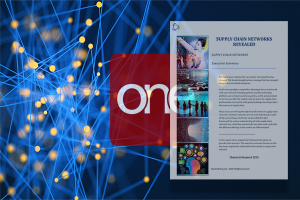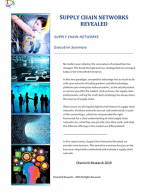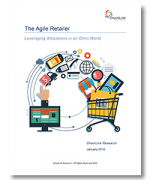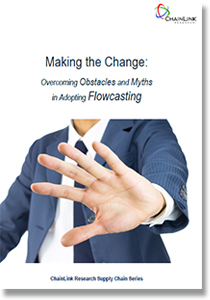Overcoming Obstacles & Myths in Adopting Flowcasting
Since direct material spend for manufacturers and inventory investment for retailers are the major expense, cost management and maintaining a solid cash position are key target areas for supply chain that can be materially positively impacted by Flowcasting.
Techniques and theories for managing our supply chains have evolved, demonstrating their effectiveness in helping our companies win more sales, improve customer relationships, and do it all profitably.
Depending on our work setting, products, and industry, certain theories and methodologies apply better than others.
Flowcasting is one of the methods that have evolved from other incremental successful initiatives in the retail supply chain.
Flowcasting is not just a supply chain methodology, though, but represents a different way of working, visualizing, and operating the supply chain as a collaborative, aligned environment in which trading partners work to mutually grow their businesses.
Some theories take a great deal of intellectual rigor. However, others are not only intuitively easy, but work. Ultimately, they all take change - a change in process, technology, and attitudes.
Success depends on embracing change, i.e., the application of good ideas by practicing, learning and adapting. We have seen many studies about leaders vs. laggards and the impact their initiatives have on corporate performance.
Those leaders who implemented supply chain process and technology pulled ahead in important metrics. But more importantly, a seminal study several years ago looked at change over time. It demonstrated a marked difference among companies who persisted in implementing change over the long run - two years and longer - refining, improving upon, and managing the change.
Those who persisted faired significantly better than firms who had a ‘one and done’ approach.
It is important to mention that last point at the outset of this paper, since many - in fact, most - organizations have made some type of forecasting effort and do use some type of technology - whether spreadsheets or software packages - to create their forecasts. Yes, some improvements do get made, but greater results may, ultimately, still elude them.
There are several reasons for this, some of which we will discuss in this paper.
Lack of success leads to cynicism or reluctance to initiate new programs. Stalking the halls of even the best companies are “we tried that before; it’s too hard” and so on. But these statements should not be the criteria by which important initiatives for a business are evaluated. Rather, the value and feasibility of a program should be the main considerations.
Due to its cross-enterprise nature, Flowcasting may suffer from its share of resistance. That reluctance is exactly what we wish to tackle in this paper. What are the objections and how do we counter the myths or excuses that prevent us from making positive change? Thus, we offer the top ten frequently used objections - and the truth about them.
What’s Related




Favorites





